The primary ingredient of any scientific endeavor or deep study of the natural world is simple: curiosity. Women have always been involved in unraveling the mysteries of our planet, following their curiosity even when formal education in the sciences was closed to them. Here is just a sample of New York women with a keen desire to explore the world!
OPRHP Sites & State and National Registers of Historic Places Listed Sites:

Cold Spring Harbor Research Laboratory , Cold Spring Harbor: Barbara McClintock (1902-1992) was an American scientist and a cytogeneticist who was awarded the 1983 Nobel Prize in Physiology or Medicine, the first woman to win the award unshared. McClintock studied at Cornell University and is widely known
for her work at the Cold Spring Harbor Laboratory, where she mentored many young scientists, leaving behind an inspiring legacy for women and others facing barriers and adversity in the field. The Cold Spring Laboratory where
McClintock worked is only open to students and staff.
, Cold Spring Harbor: Barbara McClintock (1902-1992) was an American scientist and a cytogeneticist who was awarded the 1983 Nobel Prize in Physiology or Medicine, the first woman to win the award unshared. McClintock studied at Cornell University and is widely known
for her work at the Cold Spring Harbor Laboratory, where she mentored many young scientists, leaving behind an inspiring legacy for women and others facing barriers and adversity in the field. The Cold Spring Laboratory where
McClintock worked is only open to students and staff.
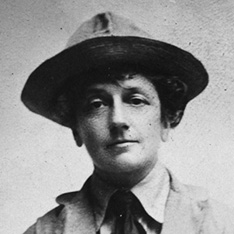
Jay Heritage Center ,
Rye: Mary Rutherford Jay (1872-1953): The National Historic Landmark childhood home of Founding Father John Jay and his family remained in the family for generations. It was vital to inspiring one
of America's first women landscape architects, Mary Rutherford Jay, John's great-great granddaughter.
,
Rye: Mary Rutherford Jay (1872-1953): The National Historic Landmark childhood home of Founding Father John Jay and his family remained in the family for generations. It was vital to inspiring one
of America's first women landscape architects, Mary Rutherford Jay, John's great-great granddaughter.
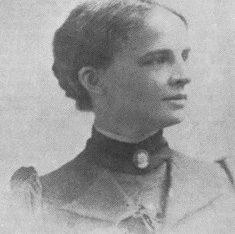
Letchworth State Park, Castile: Caroline Bishop (1849-1926): Letchworth State Park owes the preservation of much of the park's scenic beauty and historic assets to the work of William Pryor Letchworth. But many of Letchworth's battles to preserve "The Grand Canyon of the East" relied on the assistance of his indispensable secretary, Caroline Bishop. She worked with Letchworth for 27 years, living at the Glen Iris estate with him and the rest of his staff and, after his passing, became the park's first superintendent and Librarian/Curator of the park's museum.

Letchworth State Park, Castile: Mary Jemison (1743-1833) was Scotch-Irish colonial woman adopted by the Seneca during the French and Indian War. She later gained notoriety after writing a memoir of her life. After her death, her body was reinterred near the historic site of a Seneca council house, now within Letchworth State Park. You can plan your visit to the Glen Iris Inn, Mary Jemison's gravesite, and the restored Seneca Council House.
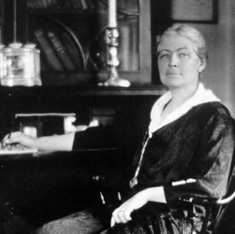
Lorenzo State Historic Site: Ellen Biddle Shipman (1869-1950)
The Federal-style mansion at Lorenzo looks out onto a garden designed in 1914 by Ellen Biddle Shipman, a woman pioneer of landscape design, to enhance her father's garden layout with more formal perennial beds. In 1983, restoration was begun following that 1914 plan, and today the garden and grounds are open to the public year-round.
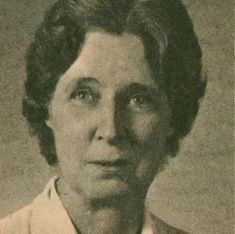
Saratoga Spa State Park, Saratoga: Grace Maguire Swanner (1901-2000) graduated from Albany Medical College in 1933 and devoted much of her life outside of private practice to helping to preserve the Lincoln and Washington baths at Saratoga Spa State Park. She was named acting medical director of the spa in 1953, began a school of massage as a training facility for the spa, and eventually wrote a book detailing the geologic and sociologic history of the park called "Saratoga Queen of Spas." Today, the park has mineral springs, twelve miles of trails, Creekside Classroom education center, and a famous Performing Arts Center.

Bear Mountain State Park, Bear Mountain: Jane Colden (1724-1760) grew up on her family's farm west of Newburgh where, after showing an interest in plants, her father taught her how to describe them using the new Linnaen taxonomy. Colden went on to write her own Botanical Manuscript describing over 300 native flora and is considered the first colonial female botanist. Bear Mountain State Park features a hand-painted sign detailing Colden's contributions to botany in the Hudson Valley. It resides at her namesake garden at the Trailside Museums and Zoo, where you can also see a spectacular view of the Hudson River.
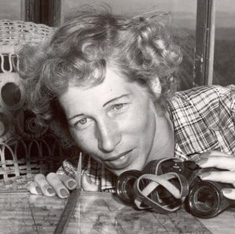
Grafton Lakes State Park, Grafton: Helen Ellett (1914-2015) was only the second woman fire tower observer in New York State, where she worked for 18 years at the Dickinson Fire Tower.
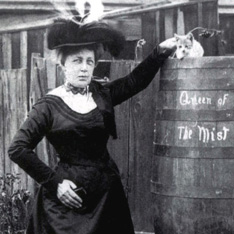
Niagara Falls State Park, Niagara Falls: Annie Edison Taylor (1838-1921) became the first person to survive going over Niagara Falls in a barrel, on her 63rd birthday in 1901. Though the feat was undertaken in hopes of making money for her later years, Taylor never achieved any lasting financial stability. She is buried in the National Register-listed Oakwood Cemetery.
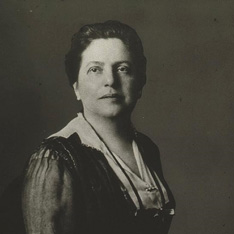
Henry Street Settlement , Manhattan: Lillian Wald (1867-1940) was a nurse, humanitarian, and founder of American community nursing.
Wald Started a visiting nurse service in 1893 on the Lower East Side. Her services treated 20,000 people by 1913 and later included children's clubs, mothers' clubs, study spaces, arts programming, and
recreational facilities, including one of the very first playgrounds in the nation.
, Manhattan: Lillian Wald (1867-1940) was a nurse, humanitarian, and founder of American community nursing.
Wald Started a visiting nurse service in 1893 on the Lower East Side. Her services treated 20,000 people by 1913 and later included children's clubs, mothers' clubs, study spaces, arts programming, and
recreational facilities, including one of the very first playgrounds in the nation.
